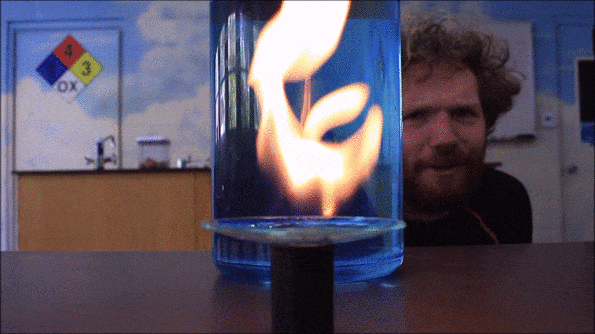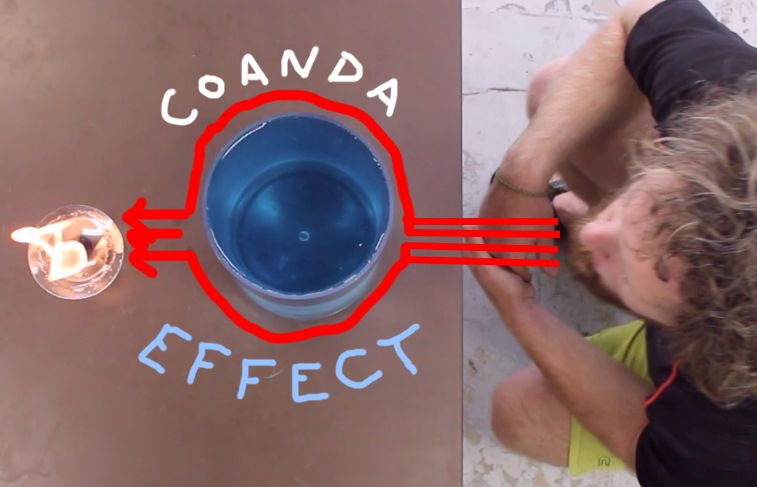
Imagine a torpedo in a wind tunnel. Incoming air slips around the torpedo’s nose, slides along its surface, and flies off its blunt back end. The air stream can’t navigate sharp corners, but as long as a smooth contour is available, it clings to that curve. This is called flow attachment, or the Coanda effect.

Image source: http://cdn.theatlantic.com/static/mt/assets/jamesfallows/angleOfAttack.jpg
A fluid is anything that can flow freely– think water or air. Thanks to the Coanda effect, we can get a stream of fluid to go anywhere we want by giving it a smooth surface to follow. Helicopters and other VTOL aircraft use this principle to enhance lift! If a blade contour is smooth everywhere except a single edge, then that edge is where passing air slides off (just like in the image above). If the edge is angled towards the ground, then the air moves downward as it leaves the blade surface. Every action has an equal and opposite reaction; in this case, the downward momentum of the air translates to upward momentum of the aircraft. This isn’t the main way that airplanes gain altitude (that’s the Bernoulli effect), but it’s a useful way to improve performance. The Coanda effect can triple the Bernoulli lift on a blade or wing!

In this experiment, we put a cylindrical container in the path of a breath of air and attempt to blow out a candle on the other side. The air stream splits in two and follows the curved surface. There’s no sharp edge for the two halves to slide off of, so they hug the contour of the obstacle until they run into each other on the far side. The collision redirects the flow, causing a burst of air to continue on past the cylinder– almost as if it wasn’t there.

Try it for yourself with a round container and a candle! Please use adult supervision testing experiments using fire.

